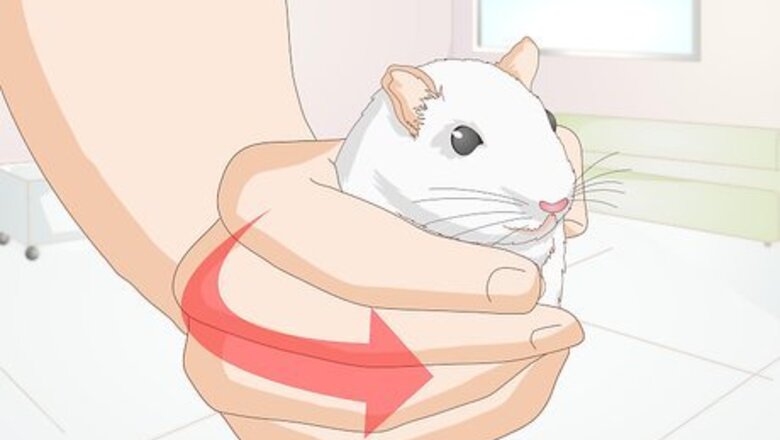
views
Checking Your Rat's Teeth
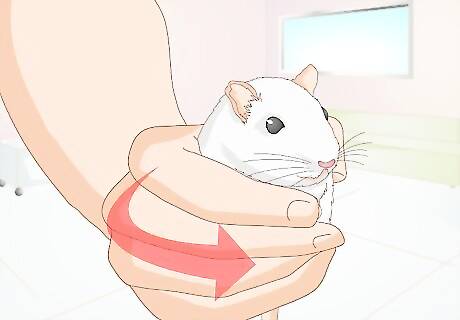
Restrain your rat. Your rat will not want to hold still while you look at his teeth, so it's important to make sure he is properly restrained. Ideally, you should have a second person hold the rat while you examine his teeth. When the rat is restrained, you should be able to gently lift his upper lip with your finger to observe his incisors. The simplest way to restrain a rat is by holding him firmly around the torso with two hands. You can also try wrapping the rat in a towel. If your rat is particularly squirmy, you can use an old sock to create a straight jacket for him. Simply cut off the toe of the sock and place the tube around your rat's body. Then use some masking tape to tape the sock loosely around your rat's neck. Be sure to secure the bottom of the sock as well. If your rat is especially cooperative, you can try letting him stand on his hind legs on a table, holding him upright with one hand right under his front legs. Use your free hand hand to open his mouth.
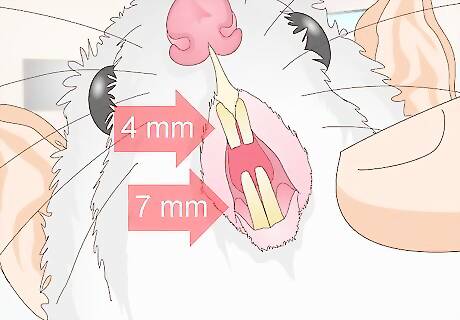
Observe the length of the teeth. Once you have your rat properly restrained and you can see her teeth, pay attention to the length of the incisors. The top incisors should be approximately 4 mm long, and the bottom incisors should be approximately 7 mm long. The teeth should be long enough that they rub against each other, but they should not overlap. Don't forget to check the cheek teeth, too, which can overgrow.
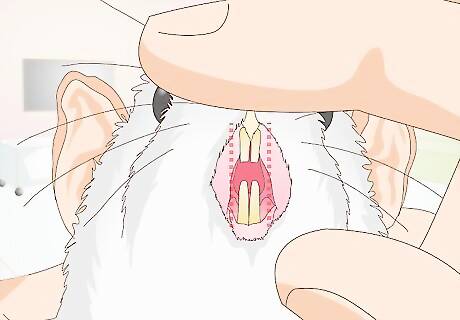
Check for alignment problems. While you are observing the length of your rat's incisors, pay attention to their alignment as well. If the top and bottom teeth do not line up with each other, they will not be able to grind against each other properly. Even if your rat's teeth are not too long now, misalignment is a sign that they might grow out of control without intervention, so be sure to check them frequently
Looking for Other Symptoms
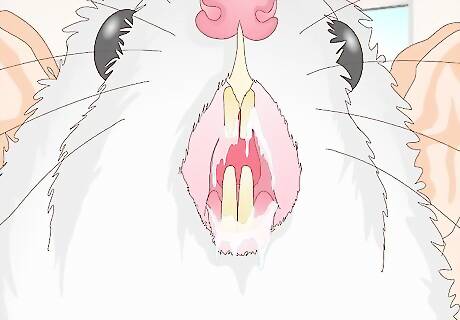
Watch for discharge. If your rat has any discharge coming from his mouth or if he seems to be drooling excessively, he may be suffering from a dental problem associated with overgrown teeth. This may also cause your rat's breath to smell very bad.

Pay attention to how your rat eats. If your rat has lost weight or does not seem to be eating normally, this may be a sign that her teeth are too long. Overgrown teeth can make it difficult or even impossible for your rat to eat, so make sure to act quickly! If your rat appears to be chewing constantly, even when she is not eating, this may also be a sign that her teeth need attention. If you notice messy eating or drooling saliva, your rat's cheek teeth may be overgrown.
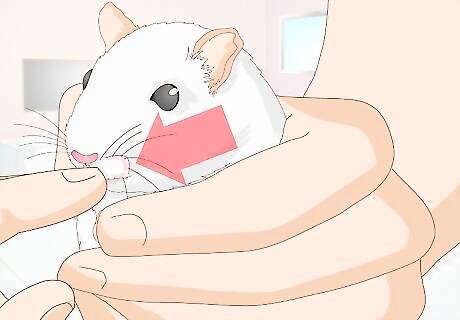
Look for lumps. If you notice any lumps on your rat's face, these may be abscesses caused by overgrown teeth. This is probably causing your rat a lot of pain, so don't delay treatment. If your rat has abscesses, you will probably notice that he seems reluctant to eat hard foods due to pain.
Dealing With Overgrown Teeth
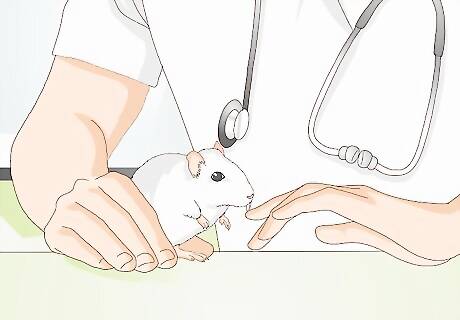
Bring your rat to the vet. If your rat's teeth are too long, the easiest and safest way to take care of the problem is to bring her to the vet to have her teeth professionally trimmed. Look for a vet that burrs the teeth instead of clipping them. Keep in mind that if your rat's teeth need to be trimmed, it will probably have to be done every few weeks. Be sure to take your rat to the vet right away if you think she has abscesses from her overgrown teeth.

Provide hard treats. If you want to help your rat maintain her own teeth, the best thing you can do is give her hard treats to chew on. Dog biscuits and branches from fruit-bearing trees are excellent treats that rats enjoy and that will help file their teeth down. This strategy may or may not solve the problem that is causing your rat's teeth to grow too long, so be sure to continue checking them weekly and clipping them whenever necessary.
Avoid clipping your rat's teeth. Using a pair of nail clippers to clip the incisors to the correct length can split the tooth and cause more problems. Take your rat to the vet and ask them to burr the teeth instead.










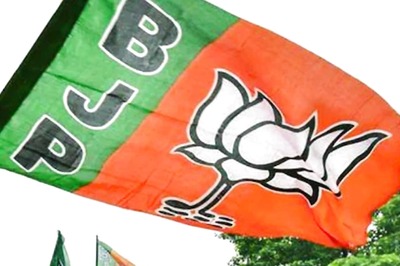
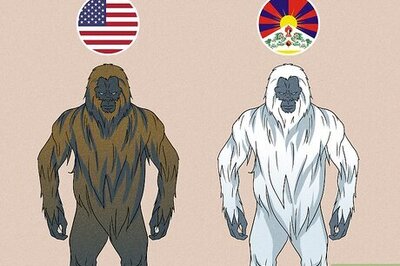


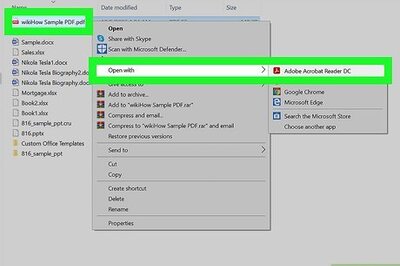





Comments
0 comment